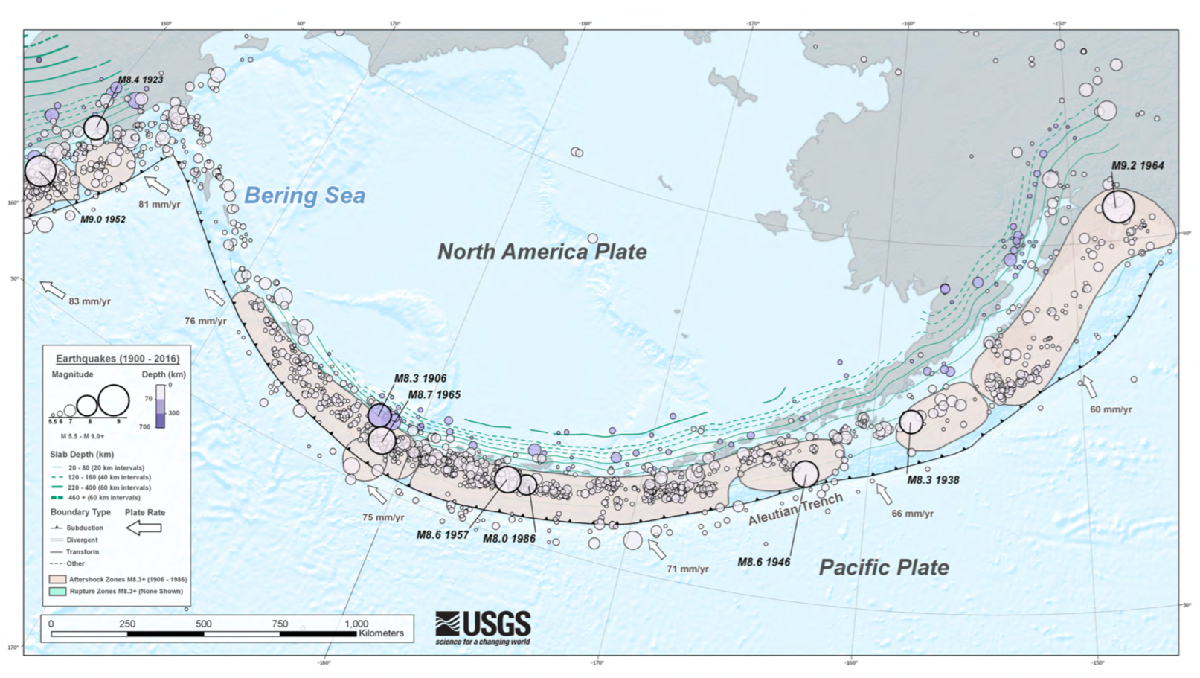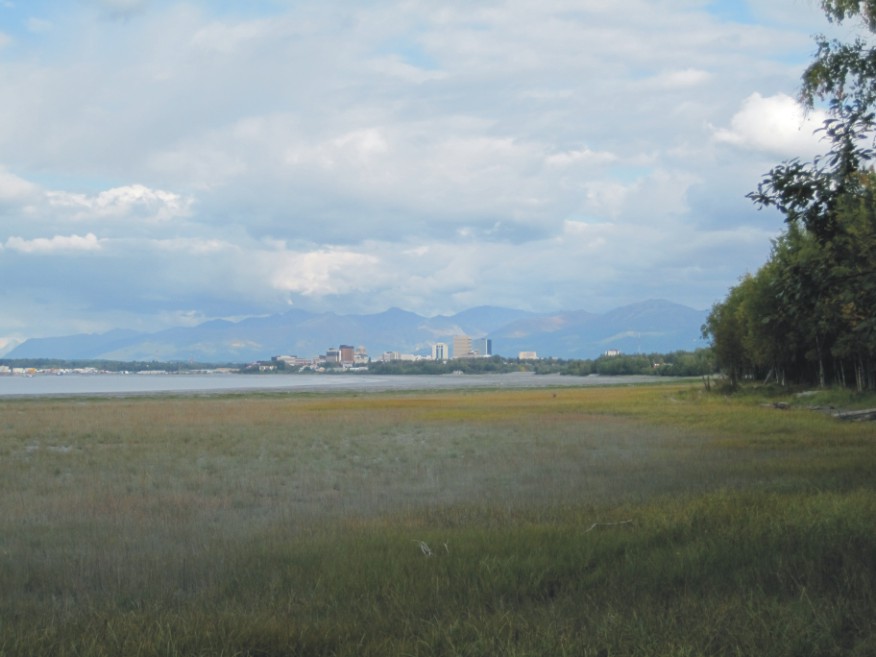The Aleutian arc extends approximately 3,000 km from the Gulf of Alaska in the east to the Kamchatka Peninsula in the west. It marks the region where the Pacific plate subducts into the mantle beneath the North America plate. This subduction is responsible for the generation of the Aleutian Islands and the deep offshore Aleutian Trench. This area is seismically active with dozens of small earthquakes registered daily.
A tsunami warning was issued for the Gulf of Alaska earthquake on January 23, 2018. This was a cause for concern due to a previous earthquake that occurred in 1964 that caused wide spread damage and casualties.
With a magnitude of 9.2, the 1964 Alaska earthquake was the second largest earthquake in the world since 1900. It resulted in a great deal of damage to many areas, including a subdivision in Anchorage known as Turnagain Heights. The earthquake caused an underlying layer of clay to lose its strength and to slip. This resulted in a strip of land 2.4 km (approximately 1.5 miles) long and between 0.4 km and 0.8 km (between approximately 0.25 and 0.5 miles) wide sliding toward the ocean.
Part of this landslide can still be visited today. A section has been left undisturbed and is known as Earthquake Park. It has a paved walking/bike trail going right through the park, as well as numerous pathways through the jumbled terrain of the actual landslide. Earthquake Park is a popular tourist destination in Anchorage.


